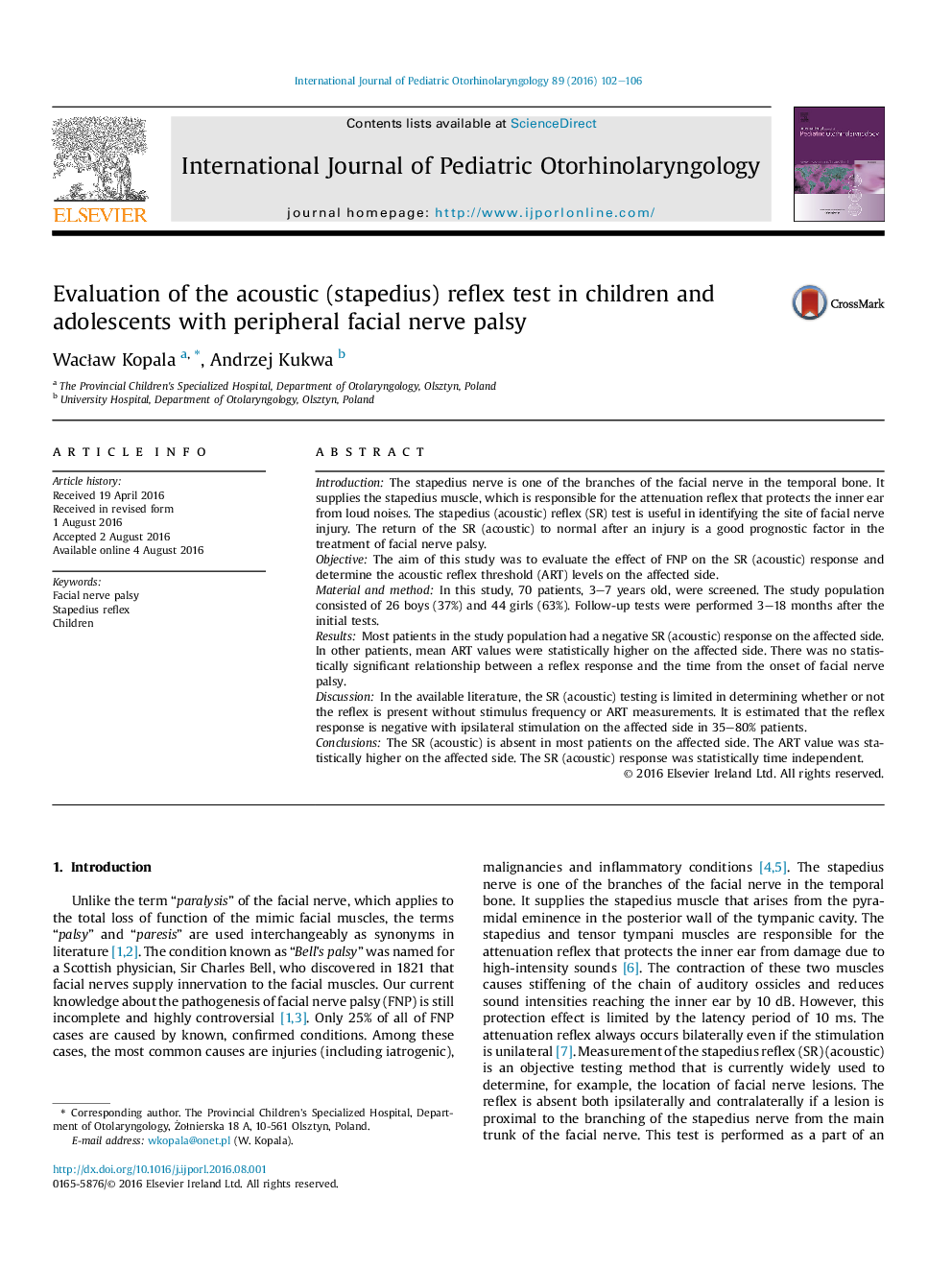| Article ID | Journal | Published Year | Pages | File Type |
|---|---|---|---|---|
| 6213084 | International Journal of Pediatric Otorhinolaryngology | 2016 | 5 Pages |
IntroductionThe stapedius nerve is one of the branches of the facial nerve in the temporal bone. It supplies the stapedius muscle, which is responsible for the attenuation reflex that protects the inner ear from loud noises. The stapedius (acoustic) reflex (SR) test is useful in identifying the site of facial nerve injury. The return of the SR (acoustic) to normal after an injury is a good prognostic factor in the treatment of facial nerve palsy.ObjectiveThe aim of this study was to evaluate the effect of FNP on the SR (acoustic) response and determine the acoustic reflex threshold (ART) levels on the affected side.Material and methodIn this study, 70 patients, 3-7 years old, were screened. The study population consisted of 26 boys (37%) and 44 girls (63%). Follow-up tests were performed 3-18 months after the initial tests.ResultsMost patients in the study population had a negative SR (acoustic) response on the affected side. In other patients, mean ART values were statistically higher on the affected side. There was no statistically significant relationship between a reflex response and the time from the onset of facial nerve palsy.DiscussionIn the available literature, the SR (acoustic) testing is limited in determining whether or not the reflex is present without stimulus frequency or ART measurements. It is estimated that the reflex response is negative with ipsilateral stimulation on the affected side in 35-80% patients.ConclusionsThe SR (acoustic) is absent in most patients on the affected side. The ART value was statistically higher on the affected side. The SR (acoustic) response was statistically time independent.
